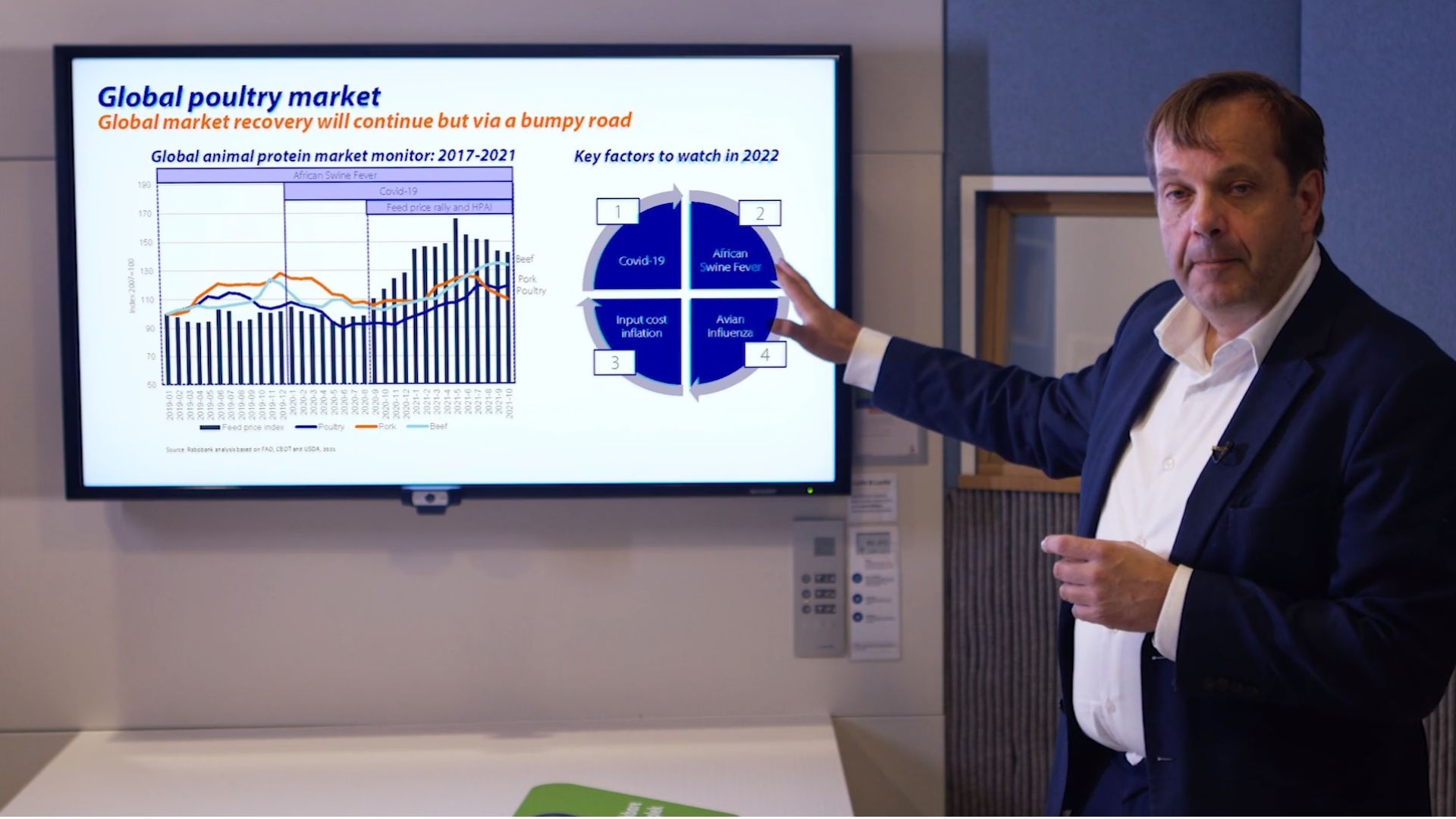Positive outlook for the global poultry market as challenges ease

Global poultry market growth in 2023 is expected to be slow, reaching only 1%, according to a recent report from Rabobank. Global poultry markets are well positioned to gradually improve in Q4 2023 and early 2024, although the level will depend on how well-balanced they are. After a period of slow poultry consumption growth due to a weak global economy and rising prices resulting from cost increases, global demand has room for some recovery, driven mainly by lower feed costs and, therefore, lower chicken prices. Markets will stay highly price-driven, but poultry should be able to benefit from its relatively competitive pricing in many markets compared to other proteins like beef, pork, and alternative proteins. Rabobank sees improving market conditions in the US, Mexico, Japan, South Africa, Indonesia, and China. However, the situation in Indonesia and China will be fragile.
The EU market has been strong, but high levels of fresh chicken imports are creating pressure. Brazil and Thailand face more challenging conditions and will need more supply growth discipline in oversupplied domestic markets. Global trade is expected to stay strong in 2H 2023 after reaching a record-high 7.2 million tonnes in the first half of the year, driven entirely by increased trade of raw poultry meat, while trade in processed poultry meat dropped sharply. Amid more price-driven markets, consumers’ product preferences are changing, and this trend is expected to continue in 2H 2023 and into 2024. Government interventions driven by food security, geopolitics, and sustainability will continue to impact markets and create volatility in global trade. Avian influenza will remain an important factor that could suddenly impact global markets, from both a local supply perspective and a trade perspective, especially if Brazil’s southern states are hit. Producers should maintain focus on the operational side.
Although we believe feed prices will drop slightly, operational costs are still at historic highs, and risks of further volatility exist in grain prices (due to El Niño) and in energy prices and availability. Ongoing leadership in terms of costs and procurement will remain key. Additionally, producers should fine-tune supply to changes in poultry demand related to products, distribution, and market development.